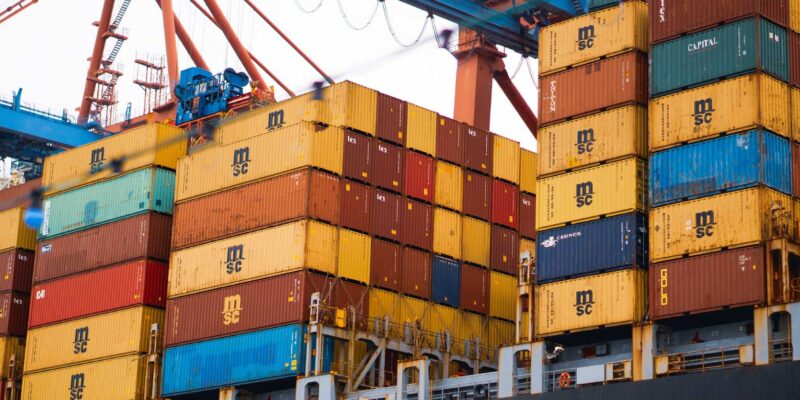Shipping dangerous goods is a complex task that requires strict adherence to international regulations to ensure the safety of people, property, and the environment. The United Nations (UN) has established guidelines that must be followed when transporting these materials.
If you’re a business owner, a logistics manager, or involved in shipping, understanding the steps for properly shipping dangerous goods is important.
Here’s a comprehensive guide to help you walk through the process.
1. Identify the Dangerous Goods
The first step in shipping dg is to correctly identify the substances you are dealing with. Dangerous goods are classified under various categories, such as explosives, flammable liquids, toxic substances, and radioactive materials.
Each category is assigned a UN number, which is a four-digit code that identifies the substance. This number is important as it determines the specific requirements for handling and transporting the goods.
Key Actions:
- Determine the UN number for your goods.
- Refer to the UN Model Regulations for the classification of dangerous goods.
2. Package the Goods According to UN Standards
Once you’ve identified the dangerous goods, the next step is to package them in compliance with UN standards. Proper packaging is vital to prevent leaks, spills, or any other incidents during transport.
The UN regulations provide specific instructions on how to package different types of dangerous goods, including the materials, size, and type of containers to be used.
Key Actions:
- Use UN-approved packaging materials.
- Ensure the packaging is durable, leak-proof, and suitable for the type of goods.
- Include necessary cushioning or absorbent materials.
3. Label and Mark the Packages Correctly
Correct labelling and marking of the packages are essential to ensure that everyone handling the goods is aware of the potential hazards. The labels must clearly indicate the nature of the danger, such as “flammable,” “toxic,” or “corrosive.” In addition to hazard labels, the package must also bear the UN number and proper shipping name.
Key Actions:
- Affix the appropriate hazard labels on the package.
- Mark the package with the UN number and shipping name.
- Include handling instructions, such as “This side up” or “Handle with care.”
4. Prepare the Required Documentation
Proper documentation is a critical part of shipping dangerous goods. The documentation must provide detailed information about the goods being transported, the packaging, and the handling instructions. This paperwork ensures that all parties involved in the transportation process are aware of the risks and can take appropriate precautions.
Key Actions:
- Complete the Dangerous Goods Declaration form.
- Include a packing list, invoice, and any other required documentation.
- Ensure that the documentation is accurate and complies with local and international regulations.
5. Choose an Appropriate Mode of Transportation
The mode of transportation (air, sea, road, or rail) will influence the specific regulations you need to follow. Each mode has its own set of rules for the transportation of dangerous goods, which are based on the UN Model Regulations.
It’s essential to choose the most suitable mode of transport and ensure that the carrier is experienced in handling dangerous goods.
Key Actions:
- Select the most appropriate mode of transportation.
- Verify that the carrier is certified to transport dangerous goods.
- Ensure that the carrier is aware of all the regulatory requirements.
6. Ensure Proper Training and Certification
Handling and shipping dangerous goods require specialised knowledge. All personnel involved in the process, from packaging to transportation, must be properly trained and certified. This training should cover the identification of dangerous goods, proper packaging, labelling, documentation, and emergency response procedures.
Key Actions:
- Provide training to all employees involved in the shipping process.
- Obtain certification for personnel who handle dangerous goods.
- Conduct regular refresher courses to keep everyone updated on the latest regulations.
7. Follow Safety and Emergency Procedures
Safety should be your top priority when shipping dangerous goods. It’s important to have a comprehensive safety plan in place, including emergency procedures in case of accidents. All parties involved in the transportation process should be aware of these procedures and ready to respond effectively.
Key Actions:
- Develop and implement a safety plan for handling dangerous goods.
- Ensure that emergency response kits are available and accessible.
- Train employees on how to respond to spills, leaks, or other emergencies.
Monitor Compliance and Review Regularly
Shipping dangerous goods is not a one-time task; it’s an ongoing responsibility. Regularly review your shipping procedures to ensure compliance with UN regulations and make any necessary adjustments. Staying informed about changes in regulations is also essential to maintaining compliance.
Key Actions:
- Conduct regular audits of your shipping processes.
- Stay updated on changes to UN regulations.
- Make necessary adjustments to your procedures to maintain compliance.
Conclusion
Properly shipping dangerous goods to comply with UN regulations is a meticulous process that requires careful attention to detail. Following these steps—identifying the goods, packaging them correctly, labelling, documenting, choosing the right transport, training personnel, ensuring safety, and monitoring compliance—you can minimise risks and ensure the safe transportation of hazardous materials. Remember, compliance is not just about meeting legal requirements. It’s about protecting lives, property, and the environment.














Comments